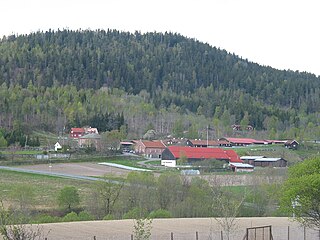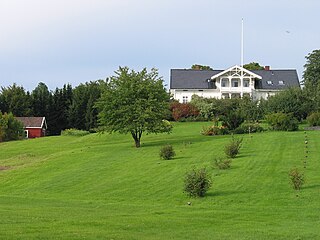Related Research Articles

Bernt Holtsmark was a Norwegian farmer and politician for the Conservative Party and the Liberal Left Party. He was a four-term member of the Parliament of Norway, and served as Minister of Agriculture from 1910 to 1912. He was also known for establishing the agricultural college at Sem in his native Asker.
Halvor Stenstadvold is a Norwegian businessperson and politician for the Conservative Party. A political scientist by education, he spent most of his career in the Federation of Norwegian Industries and Orkla Group. He has also been the chair of the Norwegian Broadcasting Corporation, the Research Council of Norway and the Oslo Stock Exchange. As a politician he has been acting mayor of Bærum municipality as well as State Secretary.
Hans Clarin Hovind Mustad was a Norwegian businessman.
Rolv Hellesylt is a Norwegian judge. He was born in Sunnylven, and graduated with the cand.jur. degree in 1956. He then spent one year at New York University. He was hired in the Ministry of Justice and the Police in 1959, and was promoted to assisting secretary in 1969. He was then a city lawyer in Oslo from 1976 to 1979, before serving as a Supreme Court Justice from 1979 to 1997. He lives at Høvik.

Snarøya is a populated peninsula in the inner Oslofjord in Norway. It belongs to Bærum municipality in Viken county. It is located south of the districts Lysaker, Lagåsen and Fornebu, and has 2,940 inhabitants.
Catharine Hermine Kølle was a Norwegian adventurer, writer and artist.

Astrid Borgny Folstad was a Norwegian actress.

Leif Andreas Larsen was a Norwegian telegrapher and politician for the Labour Party.

Øverland is an area in Bærum, Norway. Named after the local farm, Øverland is also known as a recreational area and for its arboretum. It has lent its name to the river Øverlandselva.
Homewood is a property in Sandvika, Bærum, Norway. It is known historically as the home of Otto Sverdrup, and has been municipal-owned since 1962.

Halvdan Ljøsne was a Norwegian painter.
Albert Karl Fredrik Hiorth was a Norwegian engineer.

Herman Fleischer Høst was a Norwegian physician.
Halvard Grude Forfang was a Norwegian educator.

Grini is a district in northeastern Bærum, Norway.
Arne Bakker was a Norwegian footballer and bandy player.

Polhøgda is the home of the Fridtjof Nansen Institute. It was originally built as the private home of Norwegian explorer Fridtjof Nansen. The manor home’s architecture is Roman Revival, and the former estate lies between Lysaker and Fornebu in Bærum, Norway.
Leiv Amundsen was a Norwegian librarian and philologist.

Nadderud is a district in eastern Bærum, Norway. It was formerly farmland under one of Bærum's larger farms, named Nadderud, but since the 1950s it has been built up with housing, several schools and sporting facilities. The best known facility, which has made the name Nadderud nationally known, is the stadium Nadderud stadion. Parts of the district Nadderud have been absorbed by the growing suburban centre Bekkestua.
Erik Egeland was a Norwegian journalist and art critic.
References
- 1 2 3 4 5 Seip, Didrik Arup (1938). "Kølle, Christian". In Brøgger, A. W.; Jansen, Einar (eds.). Norsk biografisk leksikon (in Norwegian). Vol. 8 (1st ed.). Oslo: Aschehoug. pp. 112–114.
- ↑ Borgen, Per Otto (2006). "Kølle, Christian". Asker og Bærum leksikon (in Norwegian). Drammen: Forlaget for by- og bygdehistorie. pp. 298–299. ISBN 82-91649-10-3.
- ↑ Kølle, Kristian: Kort Avhandling om den Danske Skriverigtighed til nøyere Overveyelse, Christiania: 1794, page 133.
- ↑ Kølle, Kristian: Introduction to Ær dæt Fornuftigt at have Religion, Christiania: 1794.
- ↑ "Å – bokstav – Store norske leksikon". Archived from the original on 2011-10-06. Retrieved 2009-09-04.
- ↑ Monrad (Store norske leksikon0
- ↑ Alfsen, Glenny. "Catharine Kølle". In Helle, Knut (ed.). Norsk biografisk leksikon (in Norwegian). Oslo: Kunnskapsforlaget. Archived from the original on 23 September 2012. Retrieved 28 August 2009.
- ↑ Borgen, Per Otto (2006). "Kristian Kølles vei". Asker og Bærum leksikon (in Norwegian). Drammen: Forlaget for by- og bygdehistorie. pp. 293–294. ISBN 82-91649-10-3.